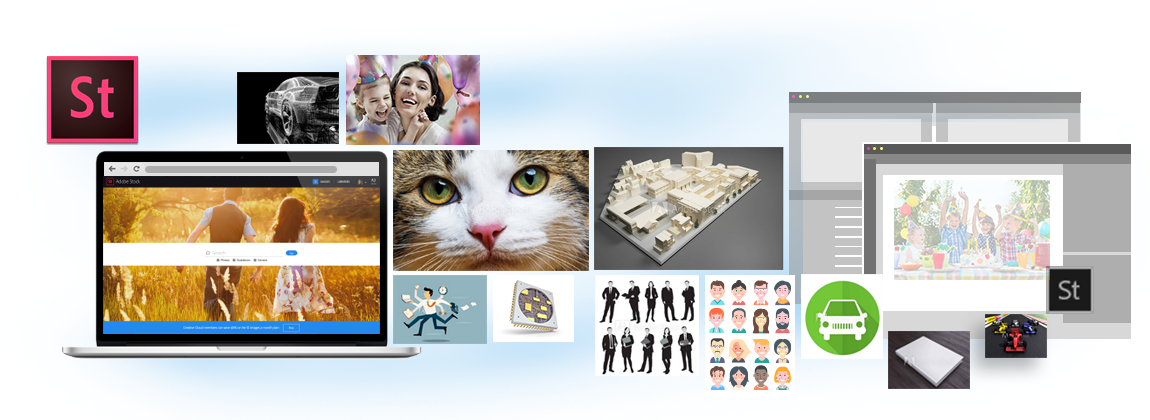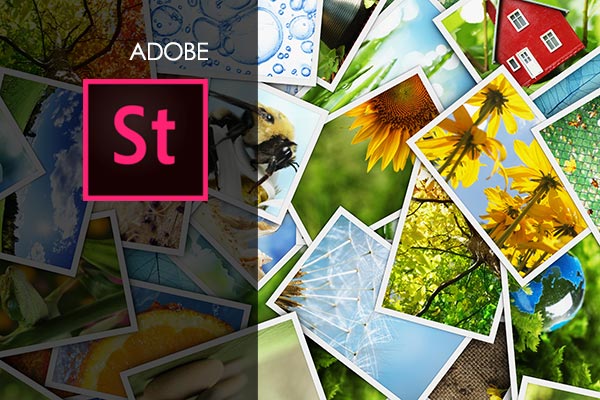When you're diving into the world of stock images, understanding licensing is crucial. Adobe Stock stands out in this space, offering a diverse library of assets that can elevate your creative projects. But before you download and use those stunning visuals or graphics, it's essential to grasp how licensing works on this platform. Licensing dictates how you can use the content, and knowing the ins and outs ensures you're legally compliant and can avoid any unexpected legal issues down the road. Let's break down the basics so you can take full advantage of what Adobe Stock has to offer!
Types of Licenses Offered by Adobe Stock

Adobe Stock provides various licensing options to cater to different needs. Understanding these licenses can help you choose the right one for your projects. Here’s a closer look at the types of licenses you can find on Adobe Stock:
- Standard License:
This is the most commonly used license for Adobe Stock assets. With a standard license, you can:
- Use the asset in projects like web and mobile advertising, social media content, or marketing materials.
- Modify the asset as needed.
- Use the asset in any print format, provided it's for a run of fewer than 500,000 copies.
However, there are limitations: you cannot use the asset in merchandise resale or as a standalone file.
- Extended License:
If your project needs more flexibility, the extended license is your go-to. Here’s what this license allows:
- All the rights offered under the standard license.
- Unlimited print runs.
- Use the asset in merchandise for resale, such as T-shirts, mugs, or posters.
This license is perfect for businesses looking to incorporate stock images into products directly.
No matter which license you choose, always read the specific terms associated with each asset. Being informed helps you use Adobe Stock confidently and creatively!
Also Read This: How to Purchase Pictures Easily from Adobe Stock
Benefits of Using Adobe Stock Licenses

If you’re venturing into the world of stock images, understanding the benefits of Adobe Stock licenses can significantly enhance your creative process. Here are some compelling reasons to consider:
- Diverse Selection: Adobe Stock offers millions of high-quality images, videos, and templates. This variety means you're more likely to find the perfect visual for your project.
- Easy Integration: If you're already using Adobe Creative Cloud apps like Photoshop or Illustrator, accessing Adobe Stock is incredibly straightforward. You can search and license assets directly from within these applications.
- Flexible Licensing Options: Adobe Stock provides two primary licensing models—standard and extended—allowing you to select the option that best fits your project’s needs. Standard licenses cover most uses, while extended licenses offer more flexibility for commercial applications.
- Cost-Effective Solutions: With subscription plans and credits available, Adobe Stock can fit various budgets. If you’re a frequent user, these options can save you a significant amount.
- Quality Assurance: The images and videos on Adobe Stock are curated, ensuring you're working with high-quality assets that are both visually appealing and professionally produced.
In summary, Adobe Stock provides a comprehensive suite of licenses that not only simplifies the licensing process but also enriches your creative projects with diverse, high-quality content.
Also Read This: How to Own a Stock with Adobe
How to Choose the Right License for Your Needs
Choosing the right license for your Adobe Stock assets can feel overwhelming, but it doesn’t have to be! Here’s a simple guide to help you navigate your options:
- Understand Your Project: First, consider the nature of your project. Is it personal, commercial, social media, or print? Your project type plays a major role in determining the appropriate license.
- Consider the Audience: Who will be seeing your work? Large audiences (think advertising campaigns or public installations) may require an extended license for broader usage rights.
- Check Distribution Plans: Will you distribute your work widely? If so, opt for a more versatile option such as an extended license, which offers greater flexibility for reproduction.
- Read the Fine Print: Always familiarize yourself with Adobe Stock's licensing agreements. Understanding what each license covers will save you from potential legal pitfalls later.
- Future Uses: Think ahead! If you plan to use the same asset in multiple projects down the line, investing in an extended license now could be more cost-effective than securing multiple standard licenses later.
By considering these factors, you can make informed decisions that best fit your needs and ensure a smooth creative journey with Adobe Stock!
Also Read This: Shutterstock Alternatives: Exploring Other Stock Photography Platforms
Common Misconceptions About Adobe Stock Licensing
When it comes to licensing on Adobe Stock, there are a few common misconceptions that might cloud your understanding. Let's clear the air!
- Misconception 1: All images are free to use.
- Misconception 2: Purchasing an image gives you unlimited rights.
- Misconception 3: I can modify any image how I please.
- Misconception 4: Licensing is a one-time process.
- Misconception 5: Adobe Stock licenses are the same as copyright.
While there are some free stock images available, Adobe Stock operates on a paid licensing model. This means that you will need to purchase credits or subscriptions to legally use their images.
Not quite! Buying an image from Adobe Stock gives you a license for specific uses. There are two main types of licenses: Standard and Extended. Standard licenses cover most commercial uses but have restrictions, such as limitations on print runs. Extended licenses allow for broader usage but come at a higher cost.
While you can edit images to fit your project, it is important to maintain ethical practices. Certain modifications might be against the license agreement, especially if they distort the original image or imply endorsement by the subject.
With Adobe Stock, licensing occurs each time you download an image. If you're using different images for various projects, you'll need to license each separately.
Licensing does not give you copyright ownership; it just grants you specific rights for usage. Adobe Stock retains the copyright for the images, so any distribution of the image beyond what’s allowed in the license is prohibited.
Also Read This: Rotating Images in Google Docs Like a Pro
Steps to License an Image from Adobe Stock
Licensing an image from Adobe Stock is a straightforward process. Here’s how you can navigate it step-by-step:
- Create an Adobe Account
- Browse or Search for Images
- Select Your Image
- Add to Cart and Decide on Licensing
- Review Your Cart and Checkout
- Download the Image
If you don’t already have an account, head over to the Adobe website and sign up for one. You’ll need an email address and password to get started.
You can search for specific keywords related to the images you need or browse through categories and collections. Adobe Stock offers a vast library, so take your time!
Once you find an image you like, click on it for a larger view. Make sure to check the image details such as license type and usage restrictions.
Choose whether you want a Standard or Extended license based on your project's needs. Click “Add to cart” to save your image.
After adding your selected images, review your cart to ensure everything is correct. Then, proceed to checkout to purchase credits or a subscription plan.
Once payment is confirmed, you can download your licensed image. Voila! You’re ready to use it in your project.
And there you go! Licensing an image from Adobe Stock is made easy to help you focus more on your creative projects rather than worrying about the nitty-gritty of licensing agreements.
Also Read This: How to Search AI Format in Adobe Stock
7. Frequently Asked Questions About Adobe Stock Licensing
When diving into the world of Adobe Stock licensing, it's natural to have some questions that pop up along the way. With so much information to absorb, let’s tackle some of the most frequently asked questions to clear up any confusion you might have!
- What is the difference between Standard and Extended licenses?
Great question! A standard license allows you to use images for most types of projects, which includes web pages, social media, and presentations. However, if you plan to print more than 500,000 copies or want to use the image in merchandise, you'd need an extended license.
- Can I use Adobe Stock images for commercial purposes?
Absolutely! You can use Adobe Stock images for a variety of commercial purposes, as long as you adhere to the licensing agreement. Just be sure to check if the image requires a standard or extended license based on your usage.
- What happens if I use an image without a license?
Using an image without the proper licensing can lead to serious legal repercussions. You may face financial penalties, and the copyright owner can pursue legal action. Always make sure you have the right license to avoid these issues.
- Can I edit images purchased from Adobe Stock?
Yep! You can edit Adobe Stock images to fit your needs. Just remember that the edited image is still subject to the same licensing terms, and it’s vital to keep track of your licenses.
- How do I ensure I’m compliant with Adobe Stock licensing?
Keeping track of your licenses and understanding the terms is key. Always read through the licensing terms before using an image and maintain a record of the licenses for future reference.
8. Conclusion: Navigating Adobe Stock Licensing Effectively
In conclusion, understanding how Adobe Stock licensing works is crucial for anyone looking to source images for personal or commercial projects. Whether you’re a seasoned designer or a beginner, knowing the ins and outs of licensing helps you make informed decisions that can save both time and potential legal troubles down the line.
Here's a quick recap of the key points to remember:
- Types of Licenses: Familiarize yourself with standard and extended licenses. Choose based on your project's scope.
- Commercial Use: Many images can be used for commercial purposes, but check the specifics of your selected media.
- Editing Rights: You can edit images, but always stay aware of the licensing agreements.
- Compliance: Keep track of your licenses, and always stay updated on any changes to Adobe Stock’s policies.
Ultimately, a grasp of licensing ensures that you use Adobe Stock assets ethically and legally while unlocking a world of creative possibilities. So, roll up your sleeves and get creating with confidence!
 admin
admin








